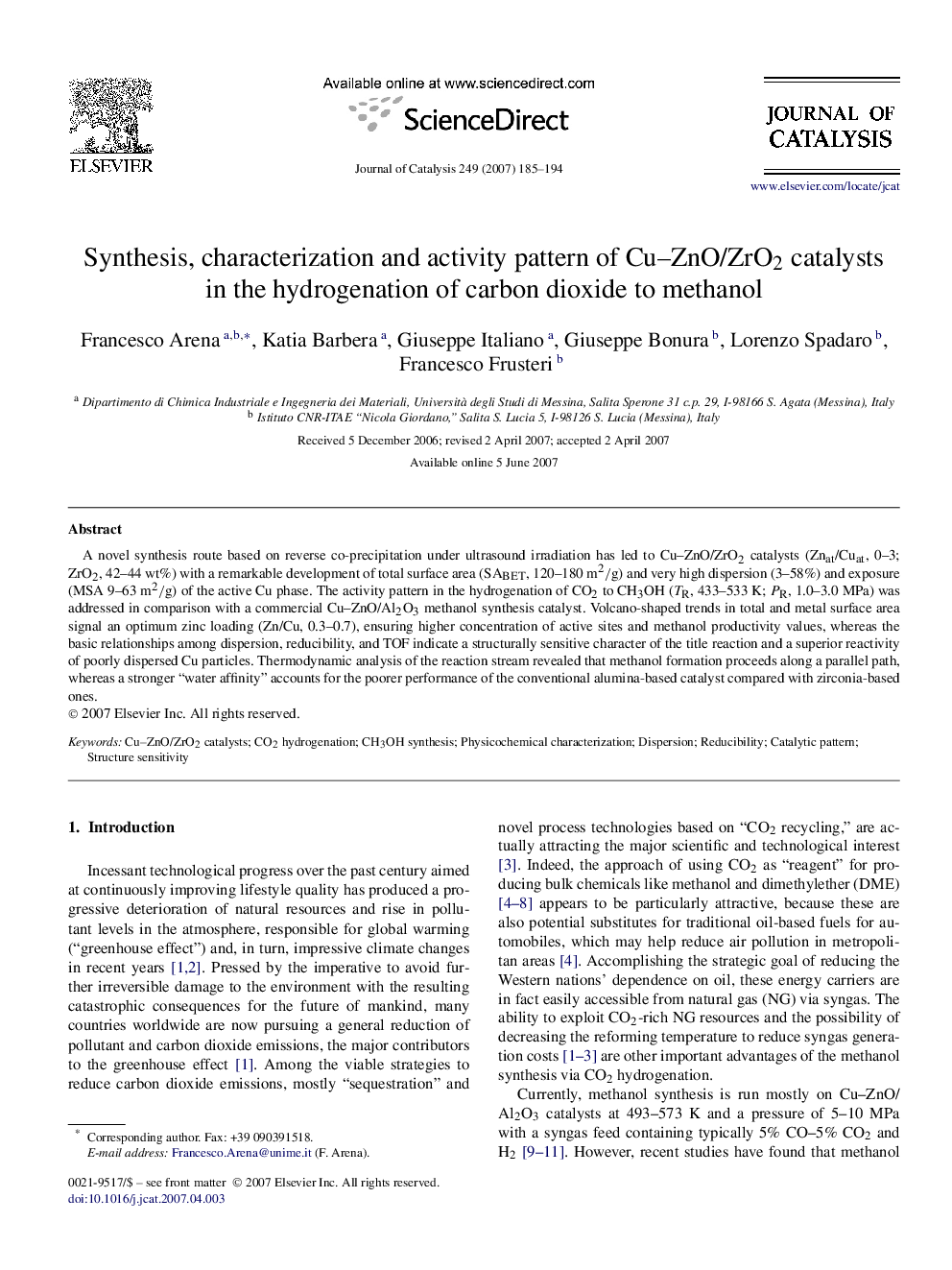| کد مقاله | کد نشریه | سال انتشار | مقاله انگلیسی | نسخه تمام متن |
|---|---|---|---|---|
| 62812 | 47657 | 2007 | 10 صفحه PDF | دانلود رایگان |

A novel synthesis route based on reverse co-precipitation under ultrasound irradiation has led to Cu–ZnO/ZrO2 catalysts (Znat/Cuat, 0–3; ZrO2, 42–44 wt%) with a remarkable development of total surface area (SABET, 120–180 m2/g) and very high dispersion (3–58%) and exposure (MSA 9–63 m2/g) of the active Cu phase. The activity pattern in the hydrogenation of CO2 to CH3OH (TRTR, 433–533 K; PRPR, 1.0–3.0 MPa) was addressed in comparison with a commercial Cu–ZnO/Al2O3 methanol synthesis catalyst. Volcano-shaped trends in total and metal surface area signal an optimum zinc loading (Zn/Cu, 0.3–0.7), ensuring higher concentration of active sites and methanol productivity values, whereas the basic relationships among dispersion, reducibility, and TOF indicate a structurally sensitive character of the title reaction and a superior reactivity of poorly dispersed Cu particles. Thermodynamic analysis of the reaction stream revealed that methanol formation proceeds along a parallel path, whereas a stronger “water affinity” accounts for the poorer performance of the conventional alumina-based catalyst compared with zirconia-based ones.
Journal: Journal of Catalysis - Volume 249, Issue 2, 25 July 2007, Pages 185–194